Design Thinking Assignment: A Case Study Portfolio
Question
Task: This design thinking assignment is a Case Study Portfolio, which consists of five main tasks. The length of the Case Study Portfolio must be 3000 words.
You need to examine the case study (two cases) of creative individuals who have invented, designed, developed and introduced innovative products.
• James Dyson, an inventor, entrepreneur and product designer, and his innovative designs of Wheelbarrow and Vacuum Cleaner;
• Mark Sanders, a product designer and design consultant, and his novel design of Folding Bicycle.
Task 1: Analyze the characteristics of design thinkers to be creative for the product development process. Your analysis should provide a critical evaluation of the cases.
Task 2: Evaluate the role of design thinking that where these creative design ideas came from for both the cases.
Task 3: By considering the design thinking process, evaluate how inventors developed the new ideas into successful products.
Task 4: Discuss the problems faced by the both inventors in getting novel products on to the market as new innovations.
Task 5: Critique whether or not the ArchiMate visual modelling language helps the designers to visualize their designs for innovative product development.
Answer
Introduction
As discussed herein design thinking assignment, innovation refers to creating a new product and inventing services or advancements in the existing line of products and services. Innovation is done in different phases and is generally time-consuming involving hard work, persistence, and perseverance help in following through the ideas and developing the same. In addition to this, creativity is a process that is directly involved in innovation procedures. The innovators should have acquired or developed learning habits for developing skills and understanding for applying creativity.
Innovations and creativity has become the core of product development and service orientation processes as it helps the companies in creating competitive edge along with operational efficiencies, reduced costs, and improved employee relations within the organizations (Razzouk&Shute, 2012). This report will discuss different aspects of design thinking and their phases with help of two case studies.
Case study Description
James Dyson has been an inventor, entrepreneur, product designer who invented Wheelbarrow and vacuum cleaners. The ideas for the wheelbarrow of Dyson were created from his experience in the engineering company in which he grasped insights into balloon tyres that are produced for vehicles. Dyson is an inventor or a designer who knows market constraints potentials which helped in considering the market opportunity for selling ball barrows with comparatively low investments in the tooling sectors. The Cyclone vacuum cleaner was designed and invented from issues in the ball barrow factories as the resin powder that was being used to coat the metal parts often blocked the filtering systems. The experts advised Dyson to install an industrial cyclone for removing the fine particles of dust from the air. Thus, the problem that occurred in the production process generated the idea for inventing domestic cleaners with the principles of the cyclone.
Mark Sanders invented innovative designs for folding bicycles equipped with short distance for using and linking with transport modes. Mark Sanders designed Strida that was invented from personal issues and needs that the inventor faced while commuting from Windsor towards London.
Task 1- Analysing Characteristics of Design Thinkers
The Design Thinking techniques are referred to as the application of human-centred procedures for solving practical problems most creatively and innovatively. In other words, Design Thinking is considered as an iterative procedure for understanding the users, challenging assumptions while also redefining the issues for identifying alternatives thus, the concept works on the solution-based approaches (Razzouk&Shute, 2012).
In this view, innovative thinking is not based on experience but depends on imagining the desired future state. Dyson combined the capabilities of conceiving and developing the technical inventions along with the designing skills for translating the ideated inventions into new attractive products and services. Innovative and creative capabilities involve creativity, lateral thinking, and intuition. It is very important for ideas in the initial stages should be raw and imperfect for questioning the established ideas (Tschimmel, 2012). The existing wholesalers and retailers selling the garden equipment did not consider that novel design of Dyson to be successful; hence the marketing was done through mail orders.
The Design Thinkers are majorly solution based thus designers sense the problems space for proposing solutions. In addition to this, for developing ideas into economic products, the later stages of product development should highly technical and low- costs for gaining immediate attention from the manufacturers, retailers, investors, and final customers. Since Dyson was a trained artist and his experience from an engineering company helped him to create products from personal dissatisfactions and issues which is also known as "constructive Discontent". The invention of cyclone vacuum cleaners arose from problems encountered while producing ball barrow which helped Dyson in using the industrial cyclones to implement for domestic uses as cleaning homes and commercial is labour intensive and time-consuming process. In addition to this, the creative process includes being aware of strengths and weaknesses thus thinking about strategies for responding to the problems by monitoring work, using flexibility, and evaluating the work progress in a critical manner (Liedtka, 2014).
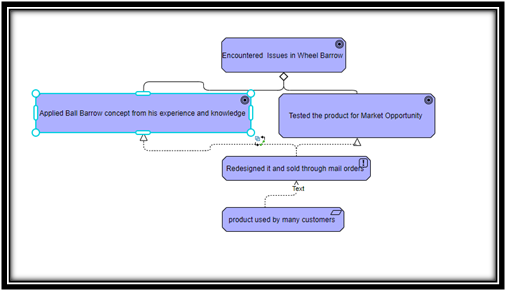
Figure 1: Mind Map for Ball Barrow concept of Dyson
(Source: Authors’ Creation)
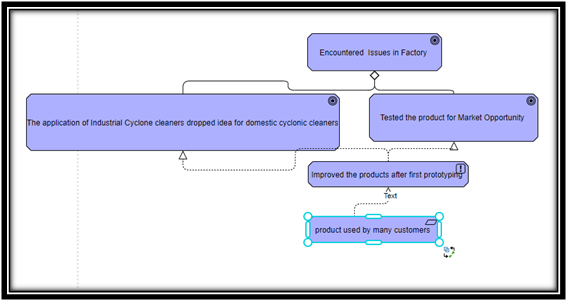
Figure 2 Mind Map for Domestic Cyclonic Cleaners of Dyson
(Source: Authors’ Creation)
In this view, Sanders faced difficulties while commuting thus he visually created the sketches for clarifying vagueness and moving forward. As a student of a mechanical engineer, Sanders often thought about the flooding bicycle, however, the problem encountered by him helped him in getting inspiration from other folding devices as this category in bicycles was unsatisfactory.
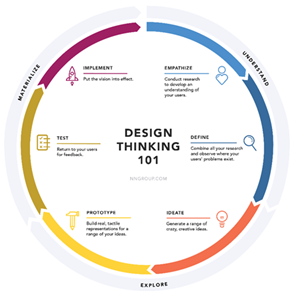
Figure 3:Design Thinking Approaches
(Source: Dam&Siang, 2018)
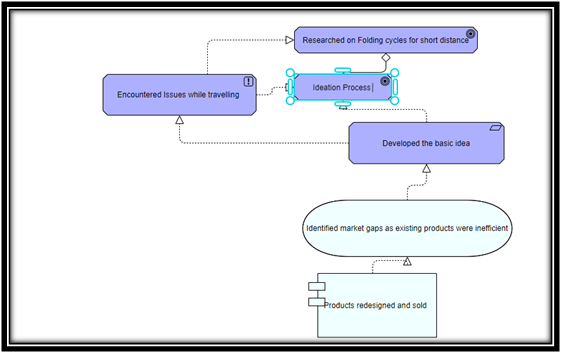
Figure 4: Design Thinking Approaches for Sanders
(Source: Authors’ Creation)
In addition to this, the design thinking characteristics of both the design thinkers included ambiguous, collaborative, constructive, curious, empathetic, holistic, iterative, non-judgmental, and open- mindset. The design thinkers were comfortable with the ideas of their products that were unclear thus working together across several disciplines. The ideas of Dyson were based on the existing products thus indicating constructiveness (Dam&Siang, 2018). Designers like Dyson and Sanders were curious about perceiving things with afresh vision.
The products that they produced were invented considering the market gaps and bigger contexts of the customers. Iterative processes were involved information was gathered from various sources that included text books, other products, mechanisms, advice from specialists and publications thereby cyclical processes were involved to improving the product from the ideation stage to the last phase. The ideas of both Dyson and Sanders were non- judgmental while the problem of the industry and consumers at large was considered.
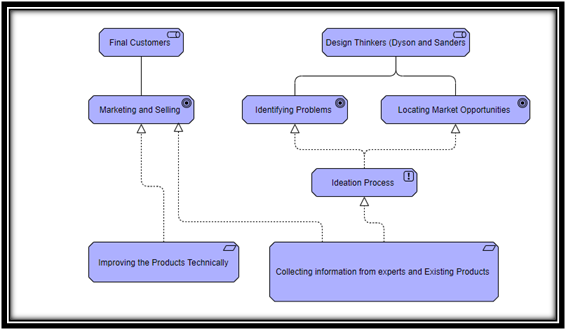
Figure 5: Mind Mapping for Design Thinking of Dyson and Sanders
(Source: Authors’ Creation)
Task 2- Evaluating Roles of Design Thinking
Design Thinking focuses on human values and needs thus making experimentation an integral part of the design procedures. As the concept of design thinking revolves around humans hence it utilizes evidence of how consumers will engage with the product or services. The design thinkers often observe people for identifying the usage of the products and align the market opportunities for refining the products or services. In addition to this, Dyson and Sanders both improvised the existing products being inspired by their own problems while also finding the existing products to be unsatisfactory. The sources of the creative ideas are required not only to provide basic concepts about product innovations but also to solve issues in developing and detail designs that help in converting basic concepts for commercial innovation. The basic concepts of Dyson’s inventions included mental transfers from one application to another while Sanders tried seeking analogies amongst the problems that he aimed to solve along with the components that are prevalent with the same functionalities of the products and services.
Design Thinking starts from Brainstorming through the individuals who often draw their knowledge and accumulated observations & experiences. In the cases of Dyson and Sanders, both realized that further information is required from credible sources for moving from ideation and brainstorming stages (Johansson?Sköldberg et al, 2013). In addition to this, the driving force of design thinking is the acceleration rates of business and society that are caused by technological advancements. The role of design thinking is crucial in simplifying business processes along with customer experiences. The processes of design thinking build on earlier proposed models thus consisting of several stages linearly and circularly those creative ideas for the products by incorporating feedbacks operating various steps parallel. The designerframes issues or the problems in a hopeful and right way for creating more ideas and choosing the best answers (Johansson?Sköldberg et al, 2013). Thereby in the processes of creating ideas, the stages might not run in the same fashion but might be repeated. In this view, Sanders would use the brainstorming from other experts for creating ideas. It can be said that set of techniques are lesser important than gaining insights about the current practices and observations on engineered products for inducing ideas.
In both cases, the qualities, experience, and commitment of both the designers played a crucial role in design thinking methods and processes. The thinking was more directed towards the commercial potentials of inventing a new design with manufacturing and marketing constraints. The creation processes in the above cases collaborated with team efforts multiplied the energy thus co-creation is considered a crucial tool in activating design thinking approaches in social-technical fields. It is said that the thought process in using the designs evolves the innovation outcomes that are also directly linked with individual cognitive skills and decision making.
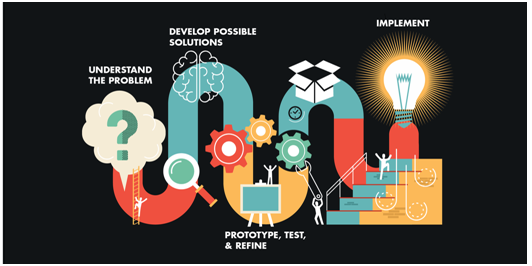
Figure 6:Design Thinking Processes
(Source: Olsen, 2015)
Task 3- Design Thinking Process
Design Thinking is divided into five stages that empower thinkers for maintaining orders for solving issues and complex problems that surround societies, organizations, and others.
Empathize- In the first stage of Design Thinking, the designers should gain an empathetic understanding of the problems and issues encountered. Thus, the experts should be consulted for gaining insights into the concerned areas through the methods of observance, engagement, and empathizing for understanding the motivation and experience of the people (Olsen, 2015). The assumptions of thinkers depend majorly on the insights of the users and their requirements. In the cases of Dyson and Sander, problems have been encountered through personal observations and interests that helped in creating ideas and technical knowledge for completing the design of the products.
Defining the Problems: In the defining stage the information collected from various sources and personal observations are used for defining the core problems in a human-centered way. The wheelbarrows could easily sink into soft surfaces with a poor body shape thus stimulating him to use another alternative (Olsen, 2015). In his second invention, he faced issues in the production unit where he was advised to industrial cyclones for segregating wastes, thus making Dyson think about home dust that could be also cleaned with the cyclonic concept. Sander required a college project while also faced issues of commuting while thinking about the available products, it seemed unsatisfactory, and hence he defined core problems to cots, foldability, appearance, and weight.
Ideation- This is the third stage, in which the designers generate ideas from observing different products and services that are already available in the market (Meinel&Leifer, 2012). The basic idea of the ball-shaped barrow and cyclonic cleaners were grasped by Dyson from his personal experiences. However, Sanders observed folding cycles and devices for a long time for generating key ideas for his product Stride. Prototype- In this view, the prototype was done fitting fibreglass moulds surrounding the footballs and finished the designs while also sent them to manufacturers. To create cyclonic cleaners, Dyson placed two cyclone particles side-by-side and showed them to the UK manufacturers. On the contrary, Sanders’s research on folding configurations helped in selecting the triangular form as a basic design for the bicycles while he used analogical thinking for detailing the functions. The final design was featured in the Royal Arts College show after which the manufactures showed interest.
Testing- This the final stage of design thinking in which the completely tested using the feedbacks and solutions from the prototyping stages (Liedtka, 2018). The testing of cyclone cleaners was done on cardboard after the inventor realized the economic benefits and market opportunities of this product. In the first prototyping stage, the product was rejected from the UK manufacturers thus he improvised the designs of cyclones with new features, concentric cyclones, and colours, the final product was successfully patented to the manufacturer from Japan. The novel design of the ball barrow was also rejected by garden equipment sellers and manufacturers; hence Dyson undertook marketing of the product through mail orders at three times higher of wheelbarrows which sold off successfully.Strida in its production stage had tube diameters redesigned for leveraging economical benefits to the manufacturers. Its several features after the prototyping stage and then was successfully launched in Japan in the year 1987.
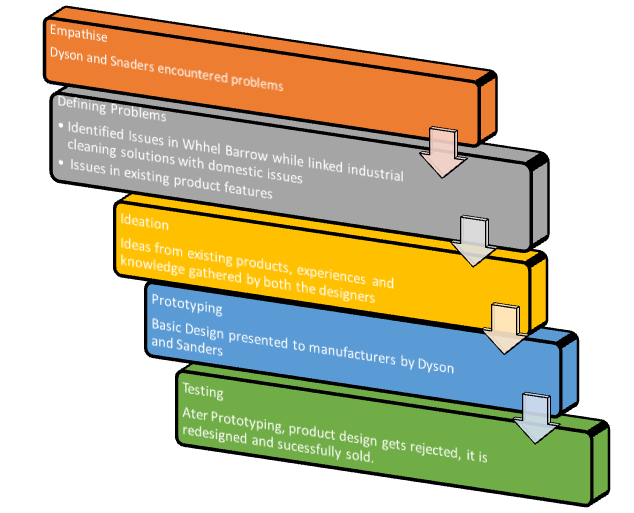
Figure 7: Design Thinking Processes (For Dyson and Sanders Design Thinking)
(Source:Author’sCreation)
|
Design Thinking Process |
Inventors |
Dyson
|
Sanders |
|
Empathise |
Encountering problems and issues with observations |
Encountered Issues while using the product for ball barrow while an industrial resolution helped in designing basic idea for cyclonic domestic cleaners |
Encountered Issues while commuting for which existing products were not sufficient |
|
Defining Problems |
Observing issues in the encountered problems |
The wheel barrow was uncomfortable and took bad shape while mixing cement |
Existing Folding cycles were expensive and insufficient |
|
|
|
|
|
|
Ideation Process |
Ideation Process Starts with Information Gathering and advice from experts |
Ideation Process started with application of personal experience (in engineering company) for developing the product. Industrial and Technical skills applied for product development |
Ideation process started with information gathering and selecting configuration from other folding devices |
|
|
Innovation Qualities plays important roles |
Innovation qualities like commitment, experience, observation played a crucial role |
Innovation qualities like commitment, experience, observation, researching, testing in various phases |
|
Prototyping
|
In this stage, the designers generally suggest low- cost versions within the products for investigating the problems that have already being generated in the earlier phases (Liedtka, 2018). |
prototype was done by fitting fiber glass moulds surrounding the footballs. To create cyclonic cleaners, Dyson placed two cyclone particles side-by-side. |
|
|
Testing |
The complete product is tested using the feedbacks and solutions from the prototyping stages (Liedtka, 2018). |
The testing of cyclone cleaners was done on cardboard after the inventor realized the economic. |
Testing and configuration was the elongated process after which final designs were confirmed for market launching |
|
|
|
|
|
Task 4- Issues faced by Inventors As per the case study both the inventors faced many issues while the product was also rejected in the first prototyping presented to manufacturers and sellers.
The Ball Barrow concept by Dyson was developedthrough several sketches and drawings thus decisions for selling the product were undertaken. However, the wholesalers and retailers of garden equipment rejected the idea or the product stating that it would not sell. Later on, Dyson marketed its mail orders and sold them successfully while in later years the product sold off to major manufactures. He faced many issues in his second invention; he researched and worked hard for making the product an economical opportunity through his skills as an engineer, designer, and inventor. The product was shown to the manufacturers but they were not convinced of its profitability hence did not agree to license. Dyson improvised the product and introduced various features after which it was successfully licensed and sold.
Sanders took a lot of time in researching and observing folding devices for designing the product (Strida). The basic design prepared by him resembled already existing products which not solve the problems he encountered. He made many designs and sketches for finding the right configuration after he selected two (X – shape and triangular frame) and shortlisted only one that is triangular shape due to its novelty and patent rights. It took a lot of hard work and time for creating each element of the product but the attempt to interest manufacturers was failed. After the product was showcased in the Art gallery show, many manufacturers showed interest. In the production version, Strida was updated with more features and was licensed and sold to Japanese manufacturers.
|
|
Dyson |
Sanders |
|
Problems |
Both the products rejected by manufacturers |
Issues faced in configuring basic and detailed design |
|
Product redesigned and sold through mail orders (for ball barrow) |
Failed to arouse investor interests.
|
|
|
Issues in ideation process, hence time and cost involved for prototyping and testing |
Time and cot involved in researching and gathering information about the product. |
Task 5- Critiquing on ArchiMate’s Visual modelling language
ArchiMate is referred to as concepts for describing the architectural language. It was developed for the Enterprise Architects to promote visual modelling languages thus the key phrases are enterprise architectures, architecture descriptions, and visual languages. The need for enterprise Architecture was developed from the linkage of business strategy plans with developments of Information Technology. The alignment on enterprise architecture is important as it might impact decision making for investments with IT assets with increased business risks. The ArchiMate Visual language offers good sets of relationships that can depict one element of enterprise architecture with another. The element and relationship patterns can be repeated for the layers of the technology which also substitutes business layers. The common patterns that are used for linking the relationships are serving and realization (Aldea et al, 2015). However, Archi Mate only shows the commonly used ones, hence the architectures need to browse their suitable relationship patterns. The model is helpful for experts that know using the architectural software; the novice designer will find it difficult as the application only is used after paid subscriptions. It is not easy to understand due to the complex functions of elements and notations. Since, it shows only commonly used relationships, hence, searching for the correct patterns can be time-consuming. There are varied opinions on its latest version as it contains 60 elements, thus for some users it is too much for the rest, the elements are insufficient. However, in theinitial stages of design thinking, this tool will be very useful for innovators and architectures. The elements can be easily connected and relationships formed, thus helping firms in undertaking appropriate business strategies.
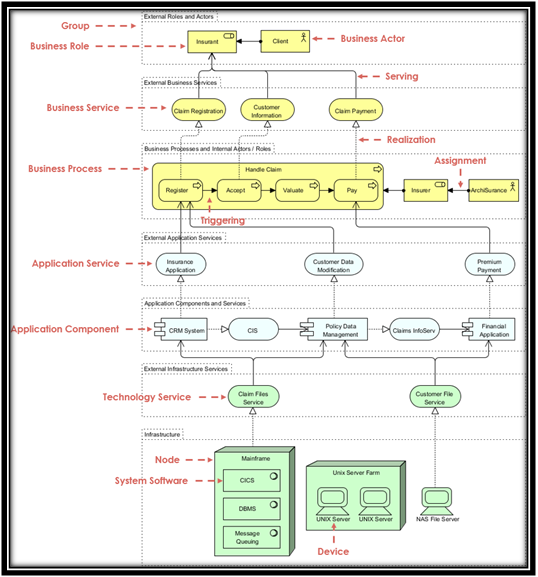
Figure 8:All Layers of ArchiMate
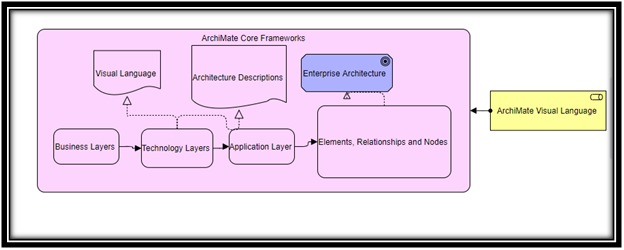
Figure 9: ArchiMate Framework
(Source: Author’s Creation)
Conclusion
Design Thinking has been more popular in the innovation domains as it helps in focusing on each phase for completing the product design. In addition to this, Dyson and Sanders had innovated products encountering issues that sold and were successfully used by many customers. In this view, the experience of using wheelbarrows was poor due to which he tried using his experience in developing ball barrows. The second invention was also linked with the production problem which helped in applying cyclonic concepts for creating domestically usable cyclone vacuum cleaners. On the contrary, problems of commuting long distances and the absence of comfortable folding bicycles created an empathetic view of Sander for his creating his products.
Design Thinking plays a crucial role in creating ideas for the development of different elements and layers of the product as the phase incorporates the failures from the previous one. ArchiMate is a visual language modelling tool that is used by architectures for developing elements and relationships. However, this tool is complicated, not user friendly, and cannot be used by all.
References
Aldea, A., Iacob, M. E., van Hillegersberg, J., Quartel, D., Bodenstaff, L., & Franken, H. (2015, April). Modelling strategy with ArchiMate.In Proceedings of the 30th Annual ACM Symposium on Applied Computing (pp. 1211-1218).
Dam, R., & Siang, T. (2018). What is design thinking and why is it so popular. Interaction Design Foundation.
Johansson?Sköldberg, U., Woodilla, J., &Çetinkaya, M. (2013). Design thinking: past, present, and possible futures. Creativity and innovation management, 22(2), 121-146.
John, P. (2012). Systems & design thinking: A conceptual framework for their integration. 4(6).
Liedtka, J. (2014). Innovative ways companies are using design thinking. Strategy and Leadership, 42(2), 40-45.
Liedtka, J. (2018). Why design thinking works. Harvard Business Review, 96(5), 72-79.
Meinel, C., &Leifer, L. (2012).Design thinking research.In Design thinking research (pp. 1-11).Springer, Berlin, Heidelberg.
Olsen, N. V. (2015). Design Thinking and food innovation. Trends in food science & technology, 41(2), 182-187.
Razzouk, R., & Shute, V. (2012). What is design thinking and why is it important?. Review of educational research, 82(3), 330-348.
Tschimmel, K. (2012). Design Thinking as an effective Toolkit for Innovation. In ISPIM Conference Proceedings (p. 1).The International Society for Professional Innovation Management (ISPIM).












